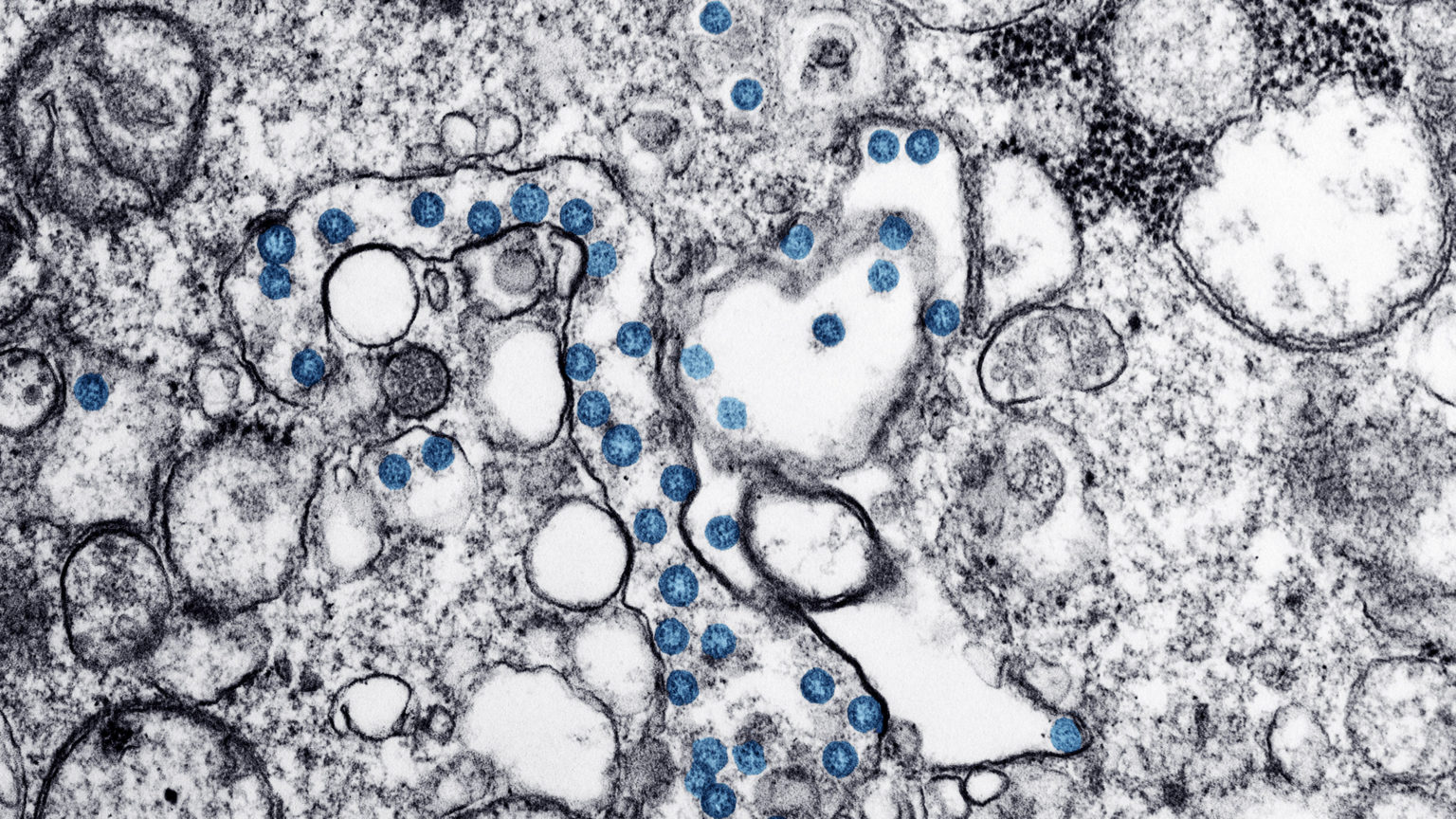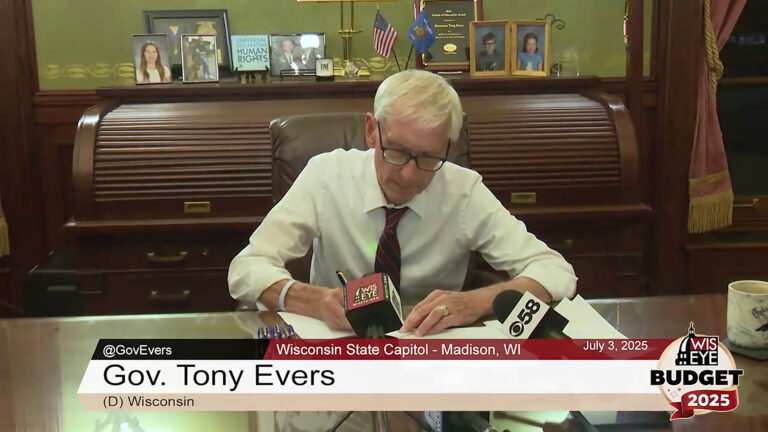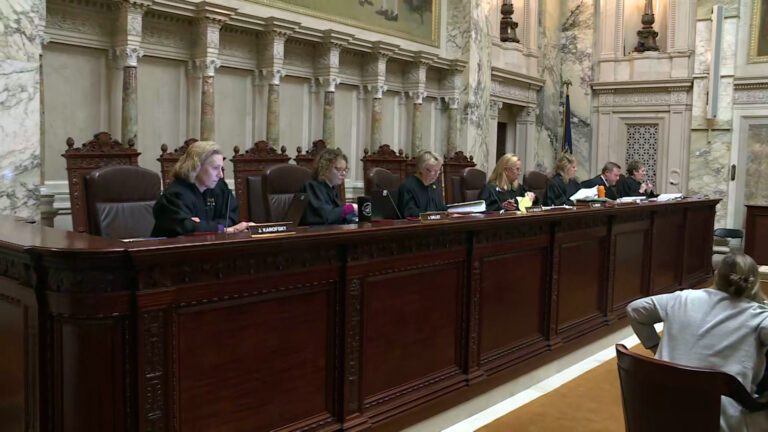Epidemiologist: 'We Are In a Crisis'
The state continues to see high rates of spread of the coronavirus, according to state epidemiologist Dr. Ryan Westergaard.
September 29, 2020

Transmission electron microscopic image of an isolate from the first U.S. case of COVID-19, formerly known as 2019-nCoV. The spherical viral particles, colorized blue, contain cross-sections through the viral genome, seen as black dots. (CDC/ Hannah A Bullock; Azaibi Tamin)
The increase of COVID-19 cases in Wisconsin is beginning to exceed the capacity of the state’s existing public health infrastructure, according to state epidemiologist Dr. Ryan Westergaard.
“We are in a crisis right now,” he said during a Tuesday media briefing. “Turning the corner on this requires that we do things dramatically different than what we’re doing.”
The number of cases is continuing to rise in the state, with Wisconsin seeing frequent day-to-day increases of more than 2,000 since mid-September. The positivity rate remains high as well, with preliminary data from the state Health Services Department showing a record 17% positive test rate.
The World Health Organization recommended governments with a 5% positive test rate remain closed, and the state had less than a 6% positive rate when Gov. Tony Evers began to lift some restrictions on businesses in May.
Westergaard’s prognosis also comes as the state saw 17 new deaths Tuesday due to the disease, a metric not seen since the early months of the pandemic. The death toll in Wisconsin reached 1,300 Tuesday, representing 1.1% of the 119,955 total COVID-19 cases since the start of the pandemic.
Westergaard said the spread is starting to strain local public health officers’ ability to handle the pandemic.
“We’ve exceeded the capacity of local health departments to identify—to do contact tracing to everyone who needs it,” he said. “The level of transmission we have right now is outstripping our ability to do that, which means that it’s safe to assume that the virus is everywhere.”
“In a generalized epidemic, it truly puts everybody at risk, and that’s what’s translating into higher cases in all age groups right now,” Westergaard said.
The state is now seeing an increase among a broad demographic of Wisconsinites, which is a departure from an early-September spike that was seen largely among young people according to health secretary Andrea Palm.
“We continue to see an overall increase in our cases. Today, our seven day average of new daily cases is 2,255—up from 684 one month ago,” she said. “With the surge in cases, our health care system is feeling the strain.”
On Tuesday, the Bellin Hospital in Green Bay announced it was at 94% capacity. When asked about the possibility of hospital surges, Palm said the state is still standing ready to provide alternative medical facilities like field hospitals.
“That is why we built that as the ultimate insurance policy in the worst case scenario, the scenario we hope we never get to, but that we are closer to getting to than we ever have been,” she said.
Palm added that the state would need four to seven days’ notice to set up the alternate facilities, should hospitals need them.
This also comes as the state is reallocating resources to approach the new wave of the pandemic. Palm said Tuesday that national guard troops that have been staffing testing sites in Madison and Milwaukee will be moved to help facilitate community testing in other areas of the state.
Testing sites in Madison and Milwaukee will transition to local staffing in October. At the Madison site, this will reduce testing from six days per week to five. According to the Milwaukee Journal Sentinel, local health officials are still working to determine what a post-national guard testing scheme will look like.
 Passport
Passport











Follow Us